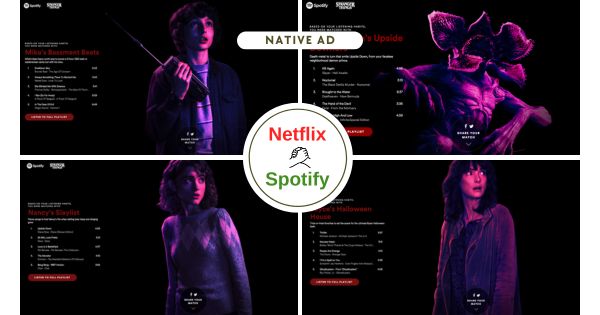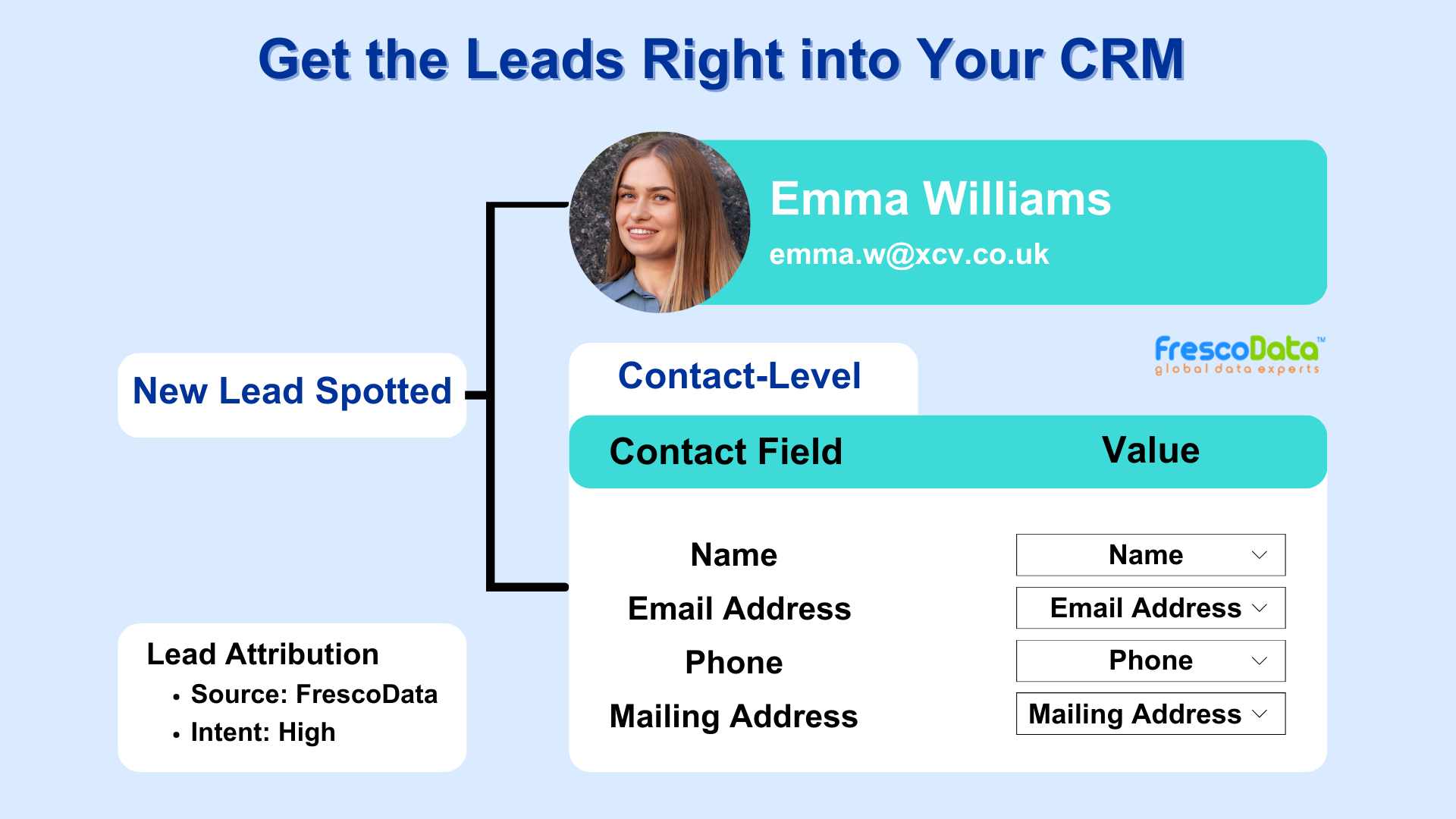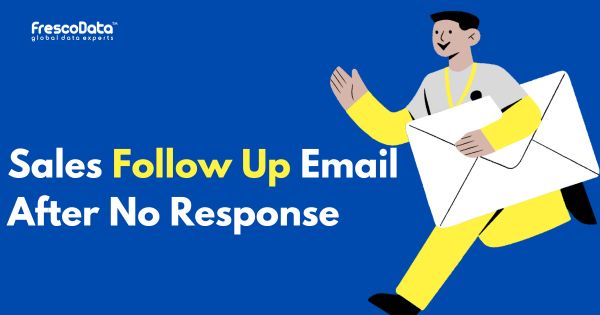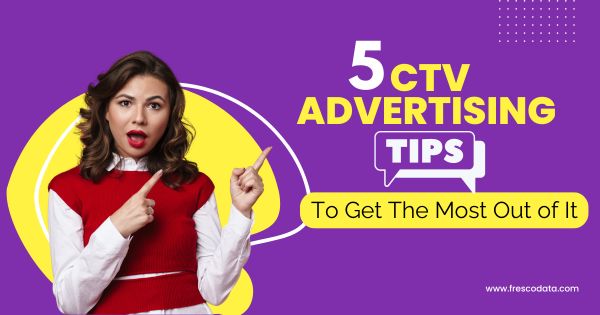- Introduction
-
What is Native Advertising?
-
Key Characteristics
-
Integration
-
Relevance
-
Seamlessness
-
Disclosure
-
Types
-
Sponsored Content/Articles
-
Promoted Social Media Posts
-
Recommended Content Widgets
-
In-Feed Ads
-
Native Video Ads
-
Search Engine Ads
-
Examples
-
Stranger Things on Spotify
-
Taco Bell on Snapchat
-
Nickelodeon & Instagram
What is Native Advertising?
Native advertising is a form of online advertising that seamlessly blends in with the content and design of the platform where it appears, making it appear more organic and less intrusive to the user experience. Rather than interrupting the user’s browsing experience with obvious promotional content, native ads match the look, feel, and context of the surrounding content.
Key Characteristics of Native Advertising

Integration
Native ads are integrated into the platform’s content stream in a way that feels natural and non-disruptive. They mimic the style and format of the surrounding content, making them appear as if they are part of the editorial or user-generated content.
Relevance
Native ads are typically targeted to the interests and preferences of the platform’s audience, ensuring that they are contextually relevant and engaging. They often align with the topics or themes of the surrounding content, making them more appealing to users.
Seamlessness
Native ads blend in seamlessly with the user experience, avoiding obvious promotional messaging or calls-to-action that may disrupt the flow of content. Instead, they provide value to users by offering informative or entertaining content that aligns with their interests.
Disclosure
While native ads are designed to appear similar to organic content, they are required to be clearly labeled as advertisements to ensure transparency and avoid misleading users. This disclosure is typically provided through visual cues or text labels that distinguish the native ad from the rest of the content.
Types of Native Advertising
Here are some common types of Native Advertising:
Sponsored Content/Articles
Articles or content created by advertisers but hosted on publisher websites. They match the tone and style of the publication but promote the advertiser’s products or services.
Promoted Social Media Posts
Advertisers pay to boost their social media posts, making them appear more prominently in users’ feeds. These posts blend with organic content but are labeled as “sponsored” or “promoted.”
Recommended Content Widgets
These appear on websites as suggestions for related articles or content. They often include sponsored links mixed with organic content, providing users with additional resources or information.
In-Feed Ads
Advertisements that appear within users’ social media feeds or content streams. They mimic the look and feel of surrounding content but are labeled as “sponsored” to differentiate them from organic posts.
Native Video Ads
Video content created by advertisers but displayed within content feeds on platforms like YouTube, Facebook, or Instagram. They blend seamlessly with other videos but are labeled as “sponsored” or “ad.”
Search Engine Ads
Text or display ads that appear alongside organic search results on search engine results pages. They match the user’s search intent but are clearly labeled as “ad” or “sponsored” to indicate their promotional nature.
Examples of Native Advertising
Here are some examples of native ads across different platforms:
Stranger Things on Spotify

Netflix collaborated with Spotify to promote the third season of “Stranger Things” through a native ad campaign.
In this campaign, Spotify created a unique experience for users by integrating elements of the “Stranger Things” universe into the platform. Specifically, users who listened to music on Spotify’s mobile app experienced an unexpected interruption during playback, where the interface seemingly transformed into the eerie world of “Stranger Things.” This included visual effects resembling the Upside Down, the alternate dimension featured in the show, along with the iconic theme music and sound effects.
While the experience lasted for a brief period, it effectively caught users’ attention and generated buzz surrounding the show’s release. The campaign successfully leveraged native advertising principles by seamlessly integrating the promotional content into the Spotify platform, creating an immersive and engaging experience for users while effectively promoting “Stranger Things” to a broad audience.
Taco Bell on Snapchat

Taco Bell sponsored a Snapchat lens/filter to promote its Cinco de Mayo celebration.
In this campaign, Taco Bell partnered with Snapchat to create a branded lens that allowed users to transform their faces into a taco shell with various toppings, similar to the customization options available in Taco Bell’s menu.
The lens featured graphics such as taco ingredients raining down, along with festive Cinco de Mayo-themed elements.
The sponsored lens appeared as an option within Snapchat’s lens carousel, allowing users to engage with the branded content and share their taco-faced selfies with friends.
By leveraging Snapchat’s popular lens feature, Taco Bell effectively reached a large audience of Snapchat users, particularly those who were active during the Cinco de Mayo holiday.
This native advertising campaign successfully integrated Taco Bell’s brand messaging and product offerings into Snapchat’s platform in a fun and engaging way, resonating with users and driving awareness of Taco Bell’s Cinco de Mayo promotion.
Nickelodeon & Instagram
Nickelodeon partnered with Instagram to create an interactive quiz-style filter based on the characters from the SpongeBob SquarePants series.
In this campaign, Nickelodeon collaborated with Instagram to develop a custom AR filter that resembled an interactive quiz.
- The filter posed questions to users, such as “Which SpongeBob character are you?” or “Which SpongeBob character best represents your personality?”
- Users could then select options or answer questions within the filter, and based on their responses, the filter would assign them a SpongeBob character that best matched their answers.
- The filter displayed the result, such as “You’re SpongeBob!” or “You’re Patrick!” along with animated graphics or effects representing the character.
- Users could share their results with friends on their Instagram Stories, fostering engagement and virality.
This native advertising campaign effectively promoted the SpongeBob SquarePants series by providing an entertaining and interactive experience for Instagram users while also increasing brand awareness and engagement for Nickelodeon.
It leveraged Instagram’s popular AR feature to engage with a large audience and capitalize on the nostalgia and popularity of the SpongeBob franchise.
Stay Updated
Recent Blogs

3 Reasons to Buy Email List
Are you hesitant to buy email list for your business? Some would say buying an email list ...
November 18, 2024
Sales Follow-up Email After No Response!
70% of sales reps don’t follow up with prospects after no response. (Source) Are you...
September 2, 2024
5 CTV Advertising Tips to Get The Most Out of It
Connected TV has opened up many interesting opportunities for advertisers, allowing them t...
August 27, 2024